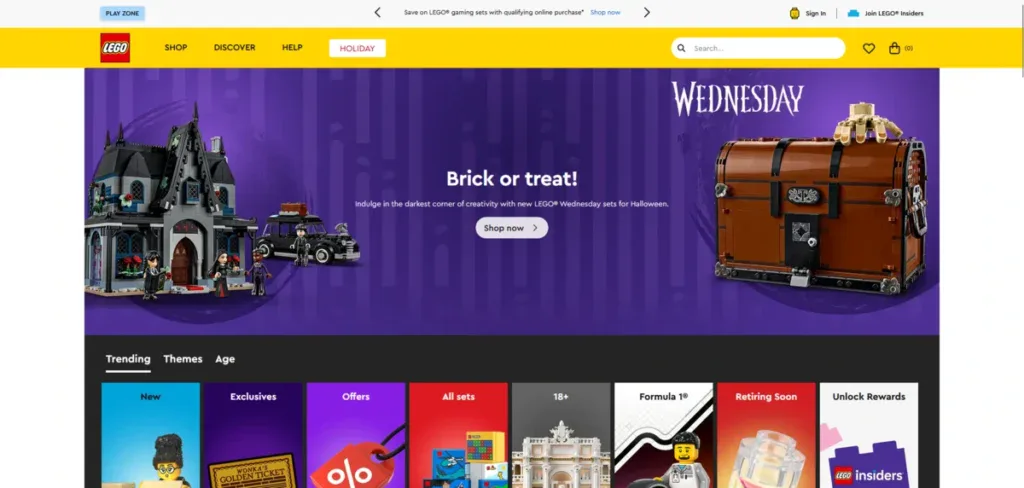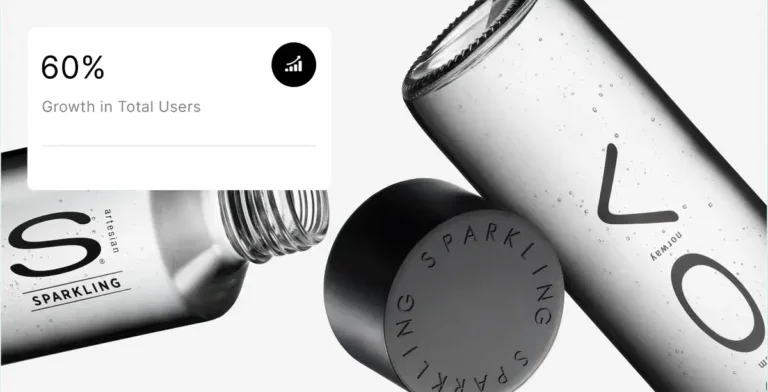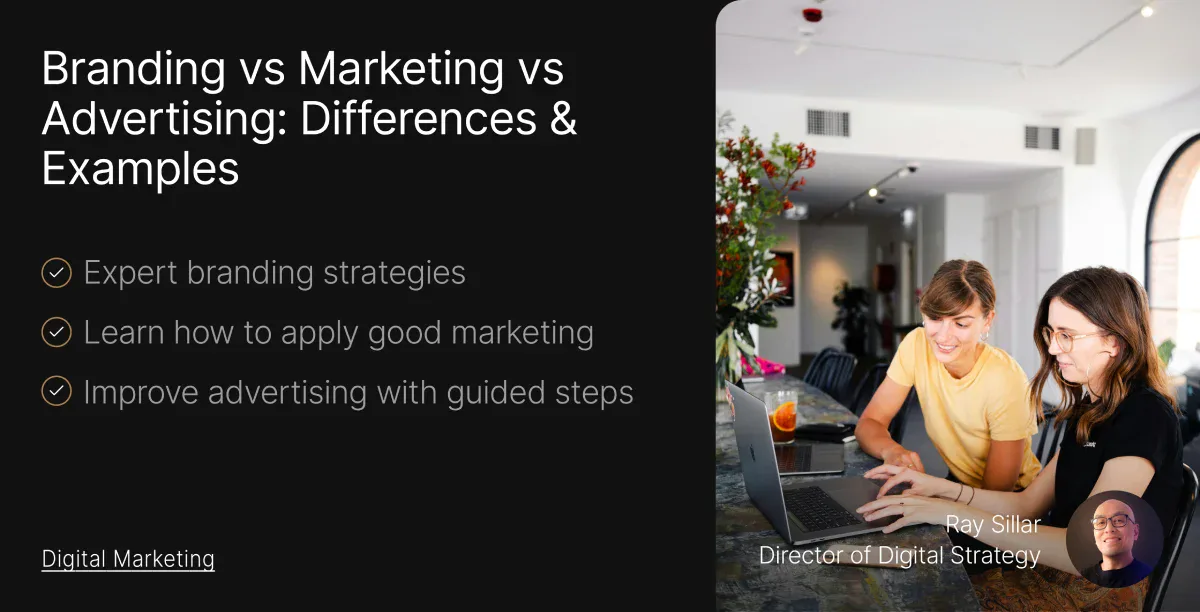Did you know that 81% of consumers need to trust a brand to consider buying from it?
Trust isn’t easily attainable nowadays for brands; they need to work hard to get consumers to trust them and buy their products and services.
There are several ways brands are able to gain the trust of consumers, and we are here to discuss it.

Branding vs marketing vs advertising has always been a comparison thrown around for years, and for good reason.
Each one of them has its distinct role and purpose, but they all work towards the same goal of building trust and attempting to convert consumers into paying customers.
This article will help you understand the whole branding vs marketing vs advertising discussion and it’ll show you how each works, what they’re best at, and how you can properly use each one to your advantage.
Trying to rebuild your brand but don’t know where to start? Let us help.
Branding vs Marketing vs Advertising What Does Each Do?
It’s hard to compare branding vs marketing vs advertising without explaining what each of them do and what they are.
So let’s start with that.
What is Branding?
Branding is the entire process of defining and shaping how people view your company. It encompasses your identity, values, promise, personality, and the emotional connection your company builds with your audience.
Branding is supposed to help you answer questions such as “Who are we as a business?” and “How do we want our customers to feel about us?”
When properly built, branding builds trust, recognition, and helps your company to stand out from the competition.
Branding has some core elements that make it unique, such as:
1. Brand identity: Visual elements like a logo, color palette, typography, and imagery go here. It’s how your brand looks to the world.
2. Brand Voice & Messaging: This is the way you deliver your message to consumers. This includes tone and intent.
3. Brand Values: It includes what you believe in and what you are committed to as a brand.
4. Customer Experience: Product quality, service, packaging, and user experience all count toward the interaction that a customer has with your brand.
5. Emotional Connection & Perception: How people feel about your brand and how they associate with it.
Why Branding Matters
Let’s start out with the most important point, which is recognizability. Without strong branding, it’ll be very difficult for customers to recognize you over the dozens of other brands that sell or do something similar to your company.
Good branding also brings with it loyalty and trust, since people will always gravitate toward the brands they believe in and feel connected to.
No company is truly complete if it doesn’t have its branding in check.
What is Marketing?
Marketing is the broadest term here of the three. But it can be defined as the set of activities and strategies a company uses to promote, distribute, and sell its products or services. It can include multiple different activities such as product development, pricing, promotion, distribution, customer relationship management, and more.
Marketing directly asks you questions such as “who is your target audience?” and “what channels and messages will reach my target audience?”
In short, marketing is the how of delivering your brand and product to market.
Marketing has some core components that make it unique, such as:
1. Market Research & Customer Insights: Understanding your audience, their pain points, and how they behave.
2. Positioning & Value Proposition: The way you differentiate the message you convey to your target audience.
3. Product, Price, Place, and Promotion: This is a regular marketing mix that every single brand uses for their marketing strategies.
4. Content Marketing, Social Media, Email, and SEO: The go-to marketing strategies and tactics that shape any effort to grow a brand.
Explore how we increased bulb’s new users by 22.6% with a new brand design in our recent case study.
Why Marketing Matters
Consumers can’t buy what they don’t know exists.
With marketing, you’re able to introduce your brand to the world while showing them who you are, what you do, and why they should care. Good marketing strategies will help your brand reach your ideal customers and increase conversions as well.
At its core, marketing serves to turn attention into action. You want your ideal customers to go from awareness to purchase with as little interruption as possible.
What is Advertisement
Advertisement is a tool or group of tools within marketing. It’s basically a paid placement of messages used to promote a product, service, or brand. It can be seen in traditional marketing such as billboards or modern marketing such as video ads on YouTube or different content ads on social media apps.
The main goal of advertising is to reach a specific group of people with a defined message and call to action.

Advertising is mainly about visibility and action. You want your ads to drive as many immediate results as possible. These can be measured as clicks, conversions, sales, or even sign-ups.
Advertising has some core elements that you should know about.
1. Paid media: This basically lets you buy space and time for your message in places such as search result pages, billboards, TV spots, and more.
2. Campaign & Creatives: The whole idea of designing ads from scratch with visuals, copy, and a dedicated CTA that helps sell the ad better.
3. Targeting & Placement: The idea of reaching the correct audience at the right time and with the right type of content.
4. Short-Term Timeframe: Defined campaigns with a budget and measurable goals.
Why Advertisement Matters
While it can be considered one of the least useful efforts of the three due to its requiring a constant flow of money to even start, when applied correctly, it can boost your sales by significant amounts.
It also provides you with a fast way to reach your target persona without having to organically wait for them to find your brand and slowly go through your funnel. Instead, you skip all that process and only find consumers who are truly interested in the product or service you offer.
Branding vs Marketing vs Advertisement: Main Differences
Now that we’ve established what branding, marketing, and advertising provide, let’s go through their main differences and compare.
Purpose
Branding: The goal of branding is to establish a clear identity, provide your values, and create an emotional connection with consumers.
Marketing: Is all about promoting products or services in a strategic way that meets the exact needs of your consumers.
Advertising: Lets you drive specific actions via paid media in a way that is measurable and simple to follow.
Timeframe
Branding: It’s a long-term and continuous process where becoming static and not adapting to new trends can severely hurt your company as a whole.
Marketing: Medium to long-term process where strategies and tactics are needed to succeed.
Advertising: Short-term process that is mainly campaign-based and offers an immediate impact.
Metrics
Branding: Brand awareness, loyalty, perception, recognition
Marketing: Engagement, lead generation, customer acquisition cost, lifetime value, and retention.
Advertising: Impressions, click-through rate, conversions, ROAS.
Do They Work Together?
Absolutely! Think about it this way: branding is who you are as a company, marketing is how you tell your story, and advertising is a fast way to share that story.
Branding is the foundation of your company, marketing builds upon this with walls and doorways, while advertising puts up a sign to attract your ideal customer.
The branding vs marketing vs advertising comparison isn’t fair because you can’t have one without the other. Confusing them can also hurt your company if you’re not careful.
Heavily investing in ads without having strong branding will lead to a wasted budget because consumers won’t be interested in yet another brand with no unique selling point.
Having amazing branding but doing nothing with it marketing-wise will lead to little to no reach or growth.
Working hard on marketing strategies without consistent branding will deliver a fragmented message and will make it so that it’s hard to recognize or remember your brand as a whole.
Learn how we increased Phillips Steel’s organic traffic by 208% with a new brand strategy in our latest case study.
Top 8 Examples From Famous Companies
There are a lot of popular companies out there that nail every single aspect of their brand.
Let’s go through several examples and discuss what makes them so effective.
1. Nike
Nike is one of, if not the most recognizable brands out there. From their swoosh to their slogan “Just Do It,” they dominate the athletic and performance lifestyle. Their brand identity is deeply embedded in everything they create and do.
Nike isn’t just selling shoes; it’s selling the idea that anyone can be an athlete.
Their top digital marketing strategy is based on emotional storytelling and inclusivity. There are a handful of examples where we can see this.
Their “Dream Crazy” campaign with Colin Kaepernick is a perfect example of how consistent their branding is and how they weave it into both marketing and advertising.
2. Apple
Apple is all about simplicity, innovation, and providing a premium feel. Their minimalist logo, clean and understated packaging, and consistent aesthetic all convey their sophistication and creativity.
While they are always pushing the limits of their devices with better specs, their main focus is never about that. Instead, they focus on building an emotional connection by promoting the why behind the product.
Apple’s “Shot on iPhone” campaign is a great example of this. They invited users to participate by sharing photos and strengthening their already strong sense of community.
When it comes to advertising, not much changes. They stay consistent with their branding of being minimal while focusing on emotions.
3. Coca-Cola
Coca-Cola’s branding centers around happiness, friendship, and positivity. Their red and white palette helps evoke a sense of nostalgia, similar to the reaction people get from Christmas. Every single element from Coca-Cola reinforces their optimism and connection to their customers.
They’re not selling you their product with their marketing strategies; instead, they focus on selling you the experience of sharing their products with family and friends.
Their “Share a Coke” campaigns with personalized bottle names increased their user-generated content while also making the idea of buying a Coke a social moment.
For advertising, they mainly focus on human connection. Showing that what matters most is how people treat each other. This makes for advertising campaigns that feel genuine and do not force consumers to buy a product.
4. Starbucks
Starbucks is a very popular brand that focuses on comfort, experience, and community. Their logo represents connection and refreshment, while their stores are meant to feel cozy and welcoming so that people can feel right at home as soon as they walk through the door.
They value loyalty over anything else, and it’s clear by how they use marketing campaigns. Their Starbucks Rewards app, for example, gives customers free drinks, custom offers, and even recipes for being loyal customers.

Starbucks also ignores most traditional advertising methods and instead focuses on an experience-driven marketing approach.
This makes any attempt to sell a new product feel genuine with a customer-first approach.
5. Airbnb
Airbnb’s branding focuses on having a sense of belonging, adventure, and community. Their logo also symbolizes a universal sense of belonging, which goes hand in hand with how they position themselves as a company. They don’t see themselves as a travel company but instead as a platform for authentic experiences.
Their marketing strategies are all about emotional connection and real stories. So campaigns like their “Belong Anywhere” campaign highlight inclusion and cultural exchange.
They also heavily focus on their content marketing, where they post content like travel guides and host spotlights, which helps build trust with their potential customers.
Their advertising doesn’t stray from what they do for their marketing since they blend both storytelling and social values together. They focus on telling a user’s story and evoking emotions and authenticity based on that.
6. LEGO
LEGO is a popular brand that centers on creativity, imagination, and having fun. This is noticeable in the use of bright colors and a simple logo that brings back childhood joy and a sense of learning.
Their main goal as a company is to inspire and develop the builders of tomorrow, which resonates with parents and kids alike.
Their digital marketing strategy is simple; they use community engagement and story-driven marketing to entice consumers to buy their products. They do dozens of different collaborations like Star Wars, Harry Potter, and Marvel to blend nostalgia and innovation into different products.

They also let their fans submit their own concepts and ideas, which in turn lets consumers build a true connection with the brand.
LEGO’s ads all focus on creativity and the possibilities of imagination.
When you see their ads, they’re all about building entire worlds with LEGOs and showing that their products aren’t just toys, but a tool to express your creativity.
7. Dove
Dove’s branding focuses on real beauty, confidence, and authenticity. Their clean and simple design reflects a sense of purity and honesty. They also heavily focus on empowering people rather than looking for perfection.
Their marketing reflects this through a purpose-driven marketing strategy. Their Real Beauty campaign challenged traditional beauty standards and encouraged self-acceptance. They constantly support women and girls by promoting body confidence messages and letting them know they are not alone in this journey.
Following suit with their branding and marketing, their advertising features people rather than models, which makes their beauty feel accessible and real.
8. Tesla
Tesla is a brand built around innovation, sustainability, and disruption. Their minimalist logo and futuristic design show us what they’re trying to achieve, which is to revolutionize transportation as a whole.
They don’t just sell cars; they sell a vision of the future and what they are trying to achieve.
Unlike other big companies, Tesla doesn’t really focus on traditional marketing and instead lets the brand do all of the talking. This means that they rely on word of mouth, social media, and brand evangelism to push their products out into the world.
Branding vs Marketing vs Advertising: Why It Matters
Being able to understand the clear difference between all three is a must if you want to take advantage of each one.
Knowing what each does lets you allocate your budget where it truly matters and in proper order to avoid wasting money. Knowing when to use your budget for brand building as opposed to using it for campaign ads can save you weeks of ads that lead to nothing since you didn’t have your branding in place yet.
Brands that invest in their identity do a lot better over time because they command higher value and provide confidence and trust to potential customers.
In crowded industries, brand identity can be the determining factor between standing out and being just another company in the pile. Marketing and advertising help amplify and convert that differentiation you have from a strong branding strategy.
When branding, marketing, and advertising are all aligned, customers have a coherent journey. From first awareness to purchase and even to loyalty.
Get a Custom Digital Marketing Strategy that Converts With Blacksmith
After going through this branding vs marketing vs advertising article, you might have noticed that instead of it being a direct comparison, it showed how you need all three to properly grow.
But let’s face it, creating a new branding strategy, then a modern marketing strategy, and also an advertising strategy can take weeks.
This is time you could be using on other aspects of your business, so what now?
That’s where we come in. Blacksmith is a professional digital marketing agency that offers:
- Premium digital marketing solutions
- All-in-one branding services
- High-performing PPC campaign management
Our experts will create the ideal plan for your business so you stand out from the crowd for all of the good reasons.
Not sure if investing in a custom digital marketing strategy is the right choice for your brand?
Don’t worry, click here to schedule a call with us and we will provide you with a full brand audit. This way we can show you how custom branding and a new digital marketing strategy can significantly improve your conversions and reach.









